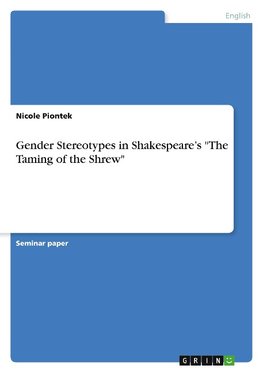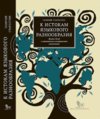
-
 Anglický jazyk
Anglický jazyk
Gender Stereotypes in Shakespeare's "The Taming of the Shrew"
Autor: Nicole Piontek
Seminar paper from the year 2019 in the subject English Language and Literature Studies - Literature, grade: 1,3, University of Bonn (Institut für Anglistik, Amerikanistik und Keltologie), course: The Renaissance in England, language: English, abstract:... Viac o knihe
Na objednávku, dodanie 2-4 týždne
16.28 €
bežná cena: 18.50 €
O knihe
Seminar paper from the year 2019 in the subject English Language and Literature Studies - Literature, grade: 1,3, University of Bonn (Institut für Anglistik, Amerikanistik und Keltologie), course: The Renaissance in England, language: English, abstract: Although stereotypes did not exist in Shakespeare's time, they do derive from history and are still visible in modern society. Every human being gets confronted with gender stereotypes in an everyday life. May it be at work, in school, in sports or politics. In addition, everyone generally knows what a stereotype is and what kind of stereotypes do apply for men and women: short hair versus long hair, trousers versus dresses, playing football versus cooking, et cetera. This paper aims at explaining what stereotypes are, in how far they are traceable in Shakespeare's "The Taming of the Shrew" and moreover taking an outlook on why it is important to talk about stereotypes nowadays.
Shakespeare's "The Taming of the Shrew" is considered as his most controversial play. It represents a violent patriarchy with weak and obedient women and numerous stereotypical characters regarding female and male ones. Furthermore, the play faced a lot of critics over time. Especially the feminist movement tears the play apart and speaks almost solely negatively of it. Nevertheless, the Royal Shakespeare Company dared to perform a new production of the play this year. Justin Audibert turned the play around by doing a gender swap. A gender swap comes along with breaking stereotypes, as women become men and vice versa.
More precisely, the first chapter of this paper discusses the general topic of stereotypes. It offers a definition of the term, examples as well as a short introduction into current issues around stereotypes. After discussing what stereotypes are in general, the second chapter demonstrates those in Shakespeare's play itself. It is divided into three topics: society, manhood and womanhood. Talking about "The Taming of the Shrew"'s society will answer the question if its context already hints at stereotypes.
The differentiation of male and female stereotypes strengthens the importance of gender in the play. In how far is gender a topic in "The Taming of the Shrew"? Are there exceptions to be made or is every character clearly to be categorized? Lastly, a look on this year's Royal Shakespeare Company production of the play offers an outlook on the current situation of the perception of stereotypes. Is it still a topic worth to consider and do stereotypes still exist in our society? Furthermore, the chapter answers the question in how far Audibert's gender swap worked.
- Vydavateľstvo: GRIN Verlag
- Rok vydania: 2022
- Formát: Paperback
- Rozmer: 210 x 148 mm
- Jazyk: Anglický jazyk
- ISBN: 9783346584779




 Nemecký jazyk
Nemecký jazyk 

 Ruský jazyk
Ruský jazyk 



